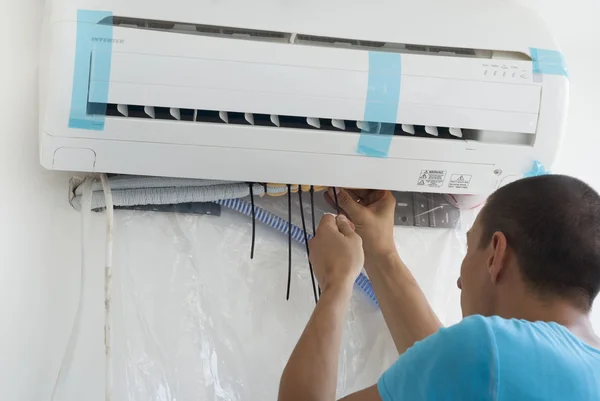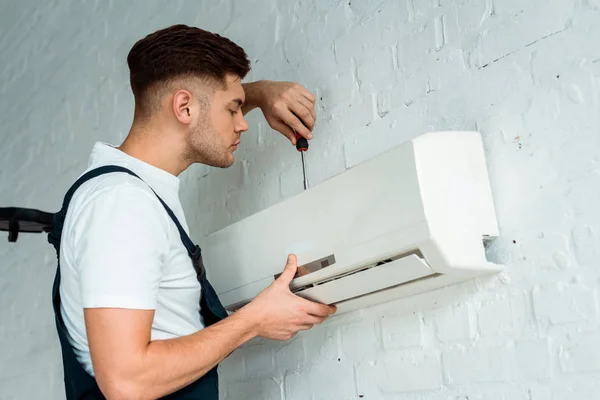Preparing Your Home For Split System Air Conditioner Installation Success
When it comes to maintaining a comfortable indoor climate, installing a split system air conditioner can be a wise investment. These systems are known for their energy efficiency and versatility, making them a popular choice for homeowners. However, proper preparation for the installation is crucial to ensure the system operates effectively and efficiently. This article will guide you through the essential steps to prepare your home for a successful split system air conditioner installation.
Understanding Split System Air Conditioners
What is a Split System Air Conditioner?
A split system air conditioner features two primary components: an indoor unit that cools the air within a room and an outdoor unit that contains the compressor and condenser. This configuration allows for quieter indoor operation and offers flexible installation options. Split systems are renowned for their energy efficiency and ability to provide targeted cooling, making them a popular choice for residential spaces. Their design helps maintain comfort in specific areas while minimizing energy consumption.
Benefits of Split System Air Conditioners
Split system air conditioners offer impressive energy efficiency, which helps lower electricity bills compared to traditional cooling systems. They provide targeted cooling for specific rooms, allowing homeowners to customize comfort based on their needs. Additionally, the separation of indoor and outdoor units results in quieter operation, reducing noise levels inside the home. Many models also include advanced features like programmable thermostats and air filtration, enhancing both convenience and indoor air quality.
Assessing Your Home’s Cooling Needs

Determining the Appropriate Size
Before installation, it is essential to assess your home’s cooling needs. The size of the air conditioning unit should match the space it is intended to cool. A unit that is too small will struggle to cool your home, while one that is too large may cycle on and off too frequently, leading to inefficient operation. Consulting with a professional to perform a load calculation can help determine the appropriate size for your split system air conditioner. Turn to www.energyeducators.com.au. for expert guidance and insights
Identifying Installation Locations
Choosing the right locations for both the indoor and outdoor units is critical for optimal performance. The indoor unit should be placed in a central location to allow for even airflow throughout the space. Avoid placing it near heat sources or in direct sunlight, as this can impact its efficiency. The outdoor unit should be installed in a well-ventilated area, away from obstructions that could restrict airflow.
Preparing Your Home for Installation
Here are four major points to consider when preparing your home for split system air conditioner installation:
- Assess Cooling Needs and Select Unit Size: Determine the appropriate size of the split system air conditioner based on your home's square footage, insulation, and cooling requirements to ensure optimal performance and energy efficiency.
- Identify Optimal Locations for Indoor and Outdoor Units: Choose strategic placements for the indoor unit to facilitate even airflow and for the outdoor unit to allow proper ventilation, avoiding any obstructions that could hinder operation.
- Clear and Prepare Installation Areas: Remove furniture and other obstacles from the installation sites to provide a safe and accessible workspace for technicians, helping to prevent damage and ensuring a smoother installation process.
- Ensure Electrical System Compliance: Verify that your home’s electrical system meets the requirements of the split system air conditioner, potentially consulting a licensed electrician to handle any necessary upgrades for safe and efficient operation.

Working with Professionals
Hiring a Qualified Installer
Hiring a qualified installer is crucial for the successful operation of your split system air conditioner. A skilled technician ensures that the unit is installed correctly, adhering to local building codes and manufacturer guidelines. Look for professionals with relevant certifications and positive customer reviews to ensure expertise and reliability. Additionally, a qualified installer can provide valuable advice on maintenance and operation, helping to optimize the efficiency and longevity of your cooling system.
Discussing Installation Details
Discussing installation details with your installer is crucial for ensuring a smooth and successful process. This conversation should encompass important factors such as timelines, costs, and any specific preferences you may have for the installation. Clear communication helps establish mutual expectations, reducing the risk of misunderstandings that could lead to delays or complications. By addressing any concerns upfront, you can ensure the installer is well-prepared, ultimately contributing to a more efficient and hassle-free installation experience.
Post-Installation Considerations
Understanding Operating Instructions
Understanding the operating instructions for your split system air conditioner is vital for maximizing its performance and efficiency. Take the time to read the user manual, which offers detailed guidance on settings, features, and maintenance requirements. Familiarizing yourself with these instructions enables you to adjust the system to suit your comfort needs effectively. Additionally, knowing how to troubleshoot common issues can help maintain optimal cooling and prolong the lifespan of your air conditioning unit.
Scheduling Regular Maintenance
Scheduling regular maintenance for your split system air conditioner is crucial for ensuring its efficiency and extending its lifespan. Routine tasks, such as cleaning or replacing filters and checking refrigerant levels, help prevent potential issues that could lead to costly repairs. Establishing a consistent maintenance schedule allows for early detection of problems, ensuring your system operates smoothly. Moreover, regular upkeep can enhance energy efficiency, resulting in lower utility bills and improved indoor comfort.

